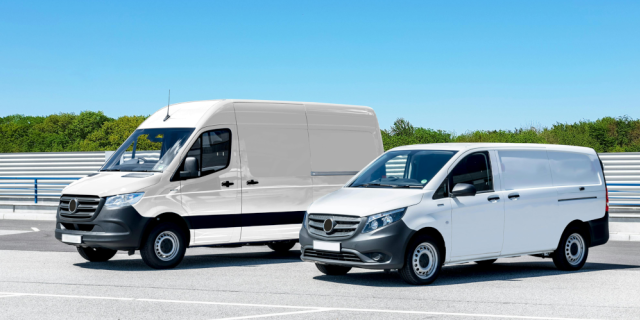Van het tekort aan halfgeleiders en grondstoffen tot een groeiende behoefte aan zeldzame aardmetalen; Europese landen voelen meer dan ooit hun afhankelijkheid van Azië voor hun supply chain.
Het tekort in de toeleveringsketen dat daaruit voortvloeit, heeft in Europa geleidelijk een transitie in de supply chain op gang gebracht om opnieuw controle te krijgen over de waardeketen van grondstoffen en batterijen.
In dit artikel wordt ingegaan op de redenen waarom autofabrikanten een dergelijk tekort in de supply chain ervaren en worden enkele acties belicht die bedrijven en landen ondernemen om hun afhankelijkheid van Azië te verminderen.
Lees hieronder meer (enkel in het Engels).
What has happened to the global supply chain?
The pandemic gave consumers across Europe time to think about their mobility choices. No doubt, the pandemic will have a lasting impact that is felt by fleet managers and auto manufacturers alike.
But this same period also saw the rise of supply chain shortages, which have limited vehicle production and deliveries, and dropped vehicle sales in Europe to their lowest point in almost three decades.
Faced with the increasing pressure to reduce emissions and increase fleet economy, fleet managers are planning to transition their carparks to electric and hybrid vehicles. But many have seen their orders delayed, or even cancelled.
But just as they have done this, key materials for the production of electrified vehicles are facing an availability crisis: rare earth elements for the production of battery cells, manufacturing capacity for battery packs, and even semiconductors for use throughout the vehicle, are currently in short supply.
And the crisis is unlikely to fully recover until 2023.
What has happened?
At fault, is a supply chain that is at once global, but on the other hand also highly concentrated in just few regions.
Over 60% of the global lithium refining takes place in China, even though Finland, France, Germany, Portugal, and Serbia have sizable deposits of this rare earth material. Over 80% of the batteries for electric vehicles are produced in China.
Similarly, almost three-quarters of semiconductor production is concentrated in Mainland China, Taiwan, South Korea, and Japan, according to a SIA / Boston Consulting Group Report.
Europe – the world’s largest trading bloc – only accounts for 10% of production, although it accounts for 20% of demand.
The high dependency on foreign supply – of both batteries and semiconductors – has led European OEMs, industry groups, and governments to strike an alarm. The European Raw Materials Alliance has noted, “the political impact of not regaining control over the rare earth value chain is tremendous.”
In 2018, the European Commission enacted a Battery Action plan to address the raw materials and battery shortages across the continent. Yet even this plan did not foresee the speed of the demand increase.
In 2020 and 2021, various consortia of suppliers and OEMs have therefore committed to investing over 120 billion Euro into the battery supply chain.
Some 35 gigafactories are planned or in construction across Europe in the next five years, according to Transport & Environment.
Yet even this capacity may well not be enough to fulfil the demand from tens of millions of new battery-electric vehicles that will be sold in Europe each year from 2025.
In January 2022, eleven associations representing the automobile, battery, solar, and power tool industries recommended five key steps in order to further secure the raw material and battery supply chain for Europe.
These included the recovery and greater use of recycled raw materials, design requirements for a second life of batteries, and restrictions on the use of hazardous substances throughout the production process.
Although manufacturing unit economics are still more favorable in Asia, the fragility of global supply-chains is forcing global players to act. Intel is adding production capacity in North America, but is also looking to Ireland, Germany, France and Italy for expansion.
This fits well with the EC’s new European Chips Act, which mirrors a similar US act and will enable an additional 15 Billion Euro in public and private funding – even easing certain state aid rules in order to accelerate the growth.
Overall, the EU’s current output of semiconductors should be quadrupled by 2030, and reach a 20% global market share of production.
This will surely grow some already strong performers in the European chipmaking industry.
Dutch-American ASML Holding is Europe’s largest tech company by market value, and the world’s largest supplier of photolithography equipment. ASML builds machines that are essential within semiconductor manufacturing. It is now hiring thousands of staff across Europe to keep up with European demand.
Similarly, the continent’s largest chipmaker, Infineon, continues to expand, and will invest 2.4 billion Euro on expanding operations in the coming years. And French-Italian ST Micro aims to top even this, planning 3.6 billion Euro in investment to expand production.
But all of these mid-term plans don’t help fleet managers and car buyers who are looking to buy today.
To help stem the shortages, auto manufacturers have found more immediate solutions. They have removed non-essential semiconductors from current models. Digital dashboards are yielding to classic dials, equipping cars with stop-start mechanisms is temporarily being halted. In some cases, even the installation of safety systems is curtailed.
Manufacturers are also rewriting software, integrating alternate chips, and expanding to new suppliers, and aim to reach full recovery by 2023.
It’s clear that fully connected, digital, and electric vehicles require similarly connected supply chains. Efforts are now underway to ensure these for the future.
Wilt u meer nieuws lezen van Arval Mobility Observatory?




